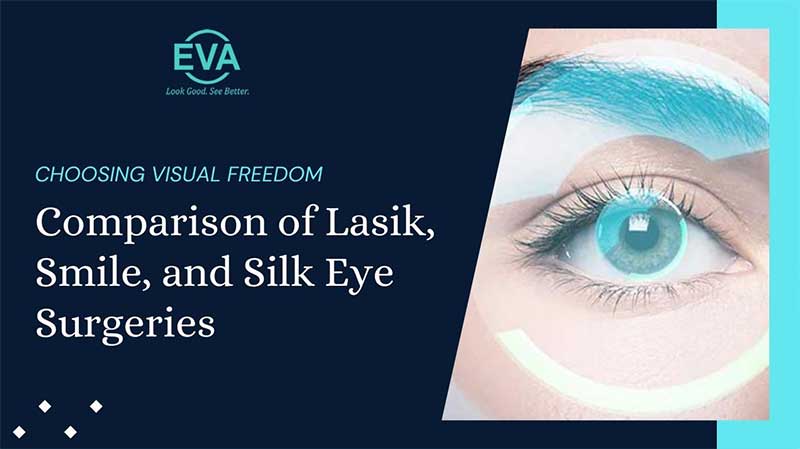Choosing Visual Freedom: A Comparison of LASIK, SMILE, and SILK Eye Surgeries

In the quest for visual freedom, advancements in eye surgery have given individuals the opportunity to liberate themselves from the shackles of glasses or contact lenses. LASIK, SMILE (Small Incision Lenticule Extraction), and SILK (Sub-Bowman's Keratomileusis) are three popular procedures that offer different approaches to correcting refractive errors. This blog aims to provide a comprehensive comparison of LASIK, SMILE, and SILK eye surgeries, helping you make an informed decision on the path to clear vision.
Understanding LASIK, SMILE, and SILK:
LASIK (Laser-Assisted In Situ Keratomileusis):
LASIK has long been a frontrunner in the field of refractive surgery. During LASIK, a laser is used to reshape the cornea, correcting nearsightedness, farsightedness, and astigmatism.
This procedure involves creating a thin flap on the cornea, lifting it to expose the underlying tissue, and using a laser to reshape the corneal tissue. The flap is then repositioned, allowing for a rapid recovery and minimal discomfort.
SMILE (Small Incision Lenticule Extraction):
SMILE is a more recent innovation that eliminates the need for a corneal flap, making it a flapless procedure. This can be appealing to individuals concerned about potential flap-related complications.
SMILE involves the creation of a small incision through which a lenticule (a small piece of corneal tissue) is extracted, reshaping the cornea to correct vision. The absence of a flap can result in a quicker recovery and reduced dry eye symptoms.
SILK (Sub-Bowman's Keratomileusis):
SILK is a variation of LASIK that combines the benefits of both LASIK and PRK (Photorefractive Keratectomy). This technique involves a unique method of creating a corneal flap, reducing the risk of complications associated with traditional LASIK flaps.
SILK preserves the corneal structure better than traditional LASIK, and it is considered a safer alternative for individuals with thinner corneas or those at a higher risk of developing flap-related complications.
Comparative Analysis:
Recovery Time:
LASIK typically offers a quick recovery, with many patients experiencing improved vision within a day or two. However, some individuals may experience dry eyes for a few weeks.
SMILE often boasts a faster recovery due to its flapless nature, with many patients reporting improved vision within 24 hours and minimal discomfort.
SILK, with its unique flap creation method, falls in between LASIK and SMILE in terms of recovery time, offering a good balance between speed and safety.
Flap-Related Complications:
LASIK carries a slight risk of flap-related complications, although advancements in technology have significantly reduced the occurrence of such issues.
SMILE eliminates the risk of flap complications altogether, making it an attractive option for those concerned about this aspect.
SILK, by incorporating a modified flap creation technique, minimizes the risk of complications associated with traditional LASIK flaps.
Suitability for Thin Corneas:
LASIK may pose challenges for individuals with thinner corneas, as the creation of a flap involves removing a certain thickness of corneal tissue.
SMILE and SILK are generally considered more suitable for individuals with thinner corneas, as they involve less tissue removal compared to traditional LASIK.
Conclusion:
In the realm of refractive surgery, choosing between LASIK, SMILE, and SILK involves careful consideration of individual preferences, risk tolerance, and specific visual needs. Each procedure offers unique advantages, and consulting with an experienced eye surgeon is crucial to determine the most suitable option for your circumstances. Whether you prioritize a rapid recovery, flap-related concerns, or suitability for thinner corneas, the pursuit of visual freedom is achievable through the right choice among these advanced eye surgeries.

